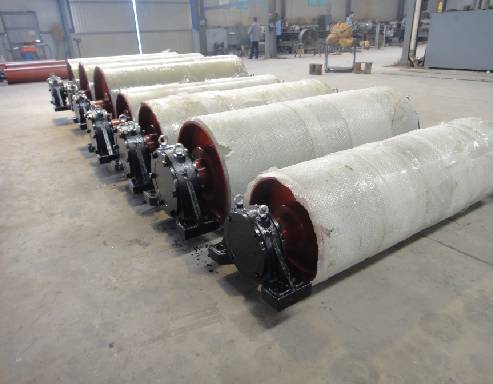 Afrikaans
Afrikaans  Albanian
Albanian  Amharic
Amharic  Arabic
Arabic  Armenian
Armenian  Azerbaijani
Azerbaijani  Basque
Basque  Belarusian
Belarusian  Bengali
Bengali  Bosnian
Bosnian  Bulgarian
Bulgarian  Catalan
Catalan  Cebuano
Cebuano  Corsican
Corsican  Croatian
Croatian  Czech
Czech  Danish
Danish  Dutch
Dutch  English
English  Esperanto
Esperanto  Estonian
Estonian  Finnish
Finnish  French
French  Frisian
Frisian  Galician
Galician  Georgian
Georgian  German
German  Greek
Greek  Gujarati
Gujarati  Haitian Creole
Haitian Creole  hausa
hausa  hawaiian
hawaiian  Hebrew
Hebrew  Hindi
Hindi  Miao
Miao  Hungarian
Hungarian  Icelandic
Icelandic  igbo
igbo  Indonesian
Indonesian  irish
irish  Italian
Italian  Japanese
Japanese  Javanese
Javanese  Kannada
Kannada  kazakh
kazakh  Khmer
Khmer  Rwandese
Rwandese  Korean
Korean  Kurdish
Kurdish  Kyrgyz
Kyrgyz  Lao
Lao  Latin
Latin  Latvian
Latvian  Lithuanian
Lithuanian  Luxembourgish
Luxembourgish  Macedonian
Macedonian  Malgashi
Malgashi  Malay
Malay  Malayalam
Malayalam  Maltese
Maltese  Maori
Maori  Marathi
Marathi  Mongolian
Mongolian  Myanmar
Myanmar  Nepali
Nepali  Norwegian
Norwegian  Norwegian
Norwegian  Occitan
Occitan  Pashto
Pashto  Persian
Persian  Polish
Polish  Portuguese
Portuguese  Punjabi
Punjabi  Romanian
Romanian  Russian
Russian  Samoan
Samoan  Scottish Gaelic
Scottish Gaelic  Serbian
Serbian  Sesotho
Sesotho  Shona
Shona  Sindhi
Sindhi  Sinhala
Sinhala  Slovak
Slovak  Slovenian
Slovenian  Somali
Somali  Spanish
Spanish  Sundanese
Sundanese  Swahili
Swahili  Swedish
Swedish  Tagalog
Tagalog  Tajik
Tajik  Tamil
Tamil  Tatar
Tatar  Telugu
Telugu  Thai
Thai  Turkish
Turkish  Turkmen
Turkmen  Ukrainian
Ukrainian  Urdu
Urdu  Uighur
Uighur  Uzbek
Uzbek  Vietnamese
Vietnamese  Welsh
Welsh  Bantu
Bantu  Yiddish
Yiddish  Yoruba
Yoruba  Zulu
Zulu Understanding the Function and Design of Conveyor Idler Pulleys in Material Handling Systems
Understanding Conveyor Idler Pulleys Design and Importance
Conveyor systems are an integral part of modern industry, facilitating the efficient transport of materials across various settings. One of the critical components of these systems is the conveyor idler pulley. Understanding the design, functionality, and significance of these pulleys is essential for anyone involved in the operation, maintenance, or selection of conveyor systems.
What Are Conveyor Idler Pulleys?
Conveyor idler pulleys are cylindrical components that support the conveyor belt while it is in motion. Unlike the drive pulleys that provide power to move the belt, idler pulleys are passive components. They are strategically positioned along the conveyor system to maintain belt tension, support the weight of the conveyed material, and help align the belt.
The primary categories of idler pulleys include return idlers, trough idlers, and impact idlers. Return idlers support the belt as it returns to the head of the conveyor, trough idlers help form the belt into a channel shape to cradle the material being conveyed, and impact idlers are designed to absorb the shock of heavy loads when they drop onto the conveyor.
Design Considerations
The design of conveyor idler pulleys is influenced by several critical factors, including the operating environment, the type of materials being transported, and the overall conveyor system layout.
1. Material Selection Idler pulleys can be constructed from various materials such as steel, plastic, or rubber. Steel provides strength and durability for heavy-duty applications, while plastic may be used in lighter environments to reduce weight and wear.
2. Size and Dimensioning Selecting the appropriate diameter and width of the idler pulley is crucial. Larger diameters can lead to better belt support and less friction, but they also take up more space and may be heavier. Widths should be chosen based on the material size and the conveyor's capacity.
3. Bearing Types The choice of bearings used in idler pulleys significantly affects their performance and lifespan. Sealed bearings can reduce maintenance needs and prevent contamination from dust and debris, making them ideal for harsh environments.
4. Alignment and Mounting Proper alignment of idler pulleys is vital to ensure that the conveyor belt tracks correctly. Misalignment can cause excessive wear on both the belt and the pulleys and can lead to operational disruptions.
conveyor idler pulley

The Importance of Conveyor Idler Pulleys
Conveyor idler pulleys play several key roles in the effective functioning of a conveyor system
- Tension Maintenance Maintaining the correct tension in the conveyor belt prevents sagging, which could lead to grinding or carryback of materials. This is essential for both efficiency and safety.
- Weight Support By supporting the weight of the material being conveyed, idler pulleys help distribute the load evenly across the belt. This prevents point loading that could otherwise cause damage to the belt or the pulleys themselves.
- Reducing Friction High-quality idler pulleys reduce the friction between the belt and the support, which increases the overall efficiency of the conveyor system. This decrease in friction can also lead to lower energy consumption.
- Dirt and Contaminant Management Idler pulleys, particularly when designed with a hooded or crowned shape, can help mitigate the accumulation of dirt and debris on the belt, further enhancing performance and longevity.
Maintenance and Care
Regular maintenance of conveyor idler pulleys is vital to ensure optimal performance. This includes checking for proper alignment, looking for signs of wear or damage, and ensuring bearings are lubricated. Keeping idler pulleys clean and free from debris will also minimize issues related to belt tracking and material contamination.
Conclusion
In conclusion, conveyor idler pulleys are fundamental to the efficiency and reliability of conveyor systems. Their design, selection, and maintenance are paramount in ensuring smooth operation and reducing downtime. Understanding their functionality can help industries optimize their material transport processes, reduce operational expenses, and prolong the lifespan of their machinery. As technology continues to evolve, so too will the design and efficiency of idler pulleys, making them an exciting area of innovation in industrial engineering.
-
Revolutionizing Conveyor Reliability with Advanced Rubber Lagging PulleysNewsJul.22,2025
-
Powering Precision and Durability with Expert Manufacturers of Conveyor ComponentsNewsJul.22,2025
-
Optimizing Conveyor Systems with Advanced Conveyor AccessoriesNewsJul.22,2025
-
Maximize Conveyor Efficiency with Quality Conveyor Idler PulleysNewsJul.22,2025
-
Future-Proof Your Conveyor System with High-Performance Polyurethane RollerNewsJul.22,2025
-
Driving Efficiency Forward with Quality Idlers and RollersNewsJul.22,2025





























